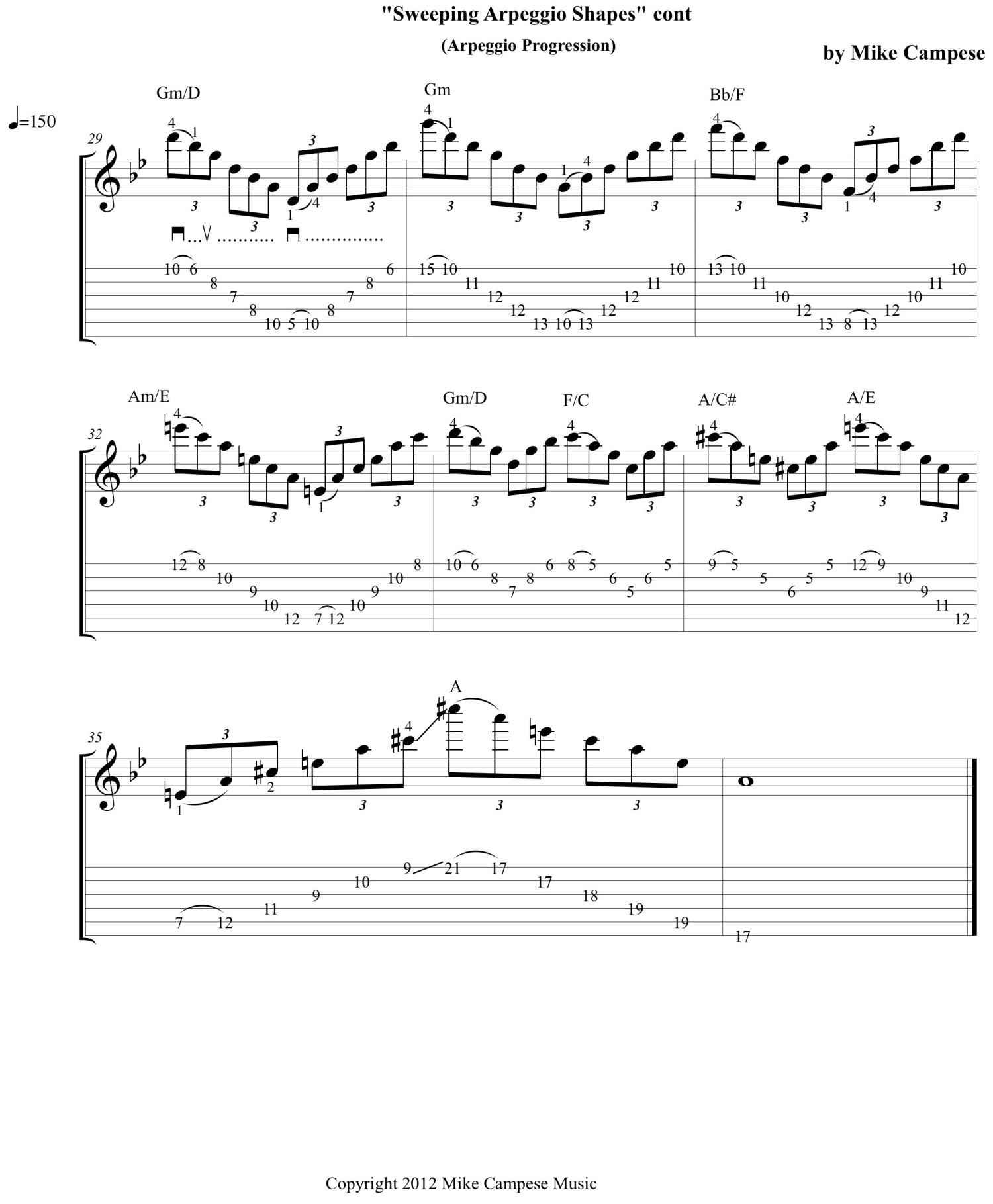Welcome back! OK, so hopefully you have all of your arpeggio shapes memorized that I gave you in the last two lessons. For this lesson, I constructed an arpeggio progression based in G minor using some of the shapes from my previous lessons. In this lesson I will teach you how to apply arpeggios to a real musical situation.
Let me quickly break this down for you.
This whole arpeggio progression is played with eighth note triplets and is in G minor, but based in the G Dorian mode and it modulates to A major in the last two bars. Above each arpeggio I listed the name of each chord with its inversion. For example, take Gm/D, which simply means G minor chord or arpeggio with a D note in the
bass.
I added a few suggested fingerings in tricky spots, you may want to follow them, or work out your own that are comfortable for you. You can use the sweep picking technique for the whole thing or you can use alternate picking. I put the right hand sweeping pattern symbols just in the first measure of the progression, it is the same for most of the arpeggios. The only difference with the sweeping is the 3-string arpeggios in bar 5 and 6, which we covered in the previous lessons.
Some of you may be still working on your sweep picking technique, so be patient. It takes time, and be sure to go slow; if you have been following the lessons it should be getting easier for you.
MP3 - Sweeping Arpeggio Shapes Wrapup, Example 1

OK, that is it! Make sure you put together your own arpeggio progressions. I use this technique in my music, which you can check out right on this site. Visit mikecampese.com for more information.
Mike Campese is an all-around music performer, session artist and teacher competent in many musical styles, electric and acoustic. He has studied at G.I.T. (Honors Graduate), and with Paul Gilbert, Norman Brown, Stanley Jordan, Scott Henderson and Keith Wyatt.